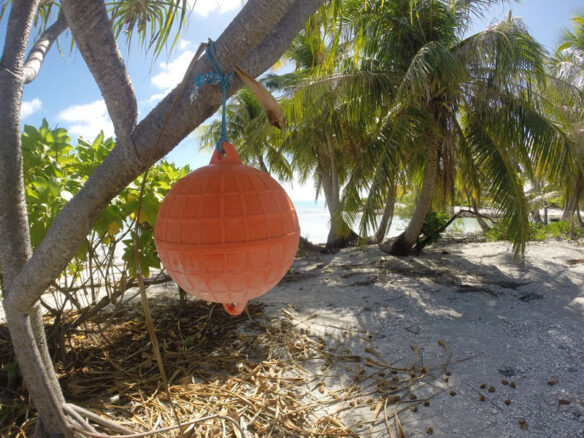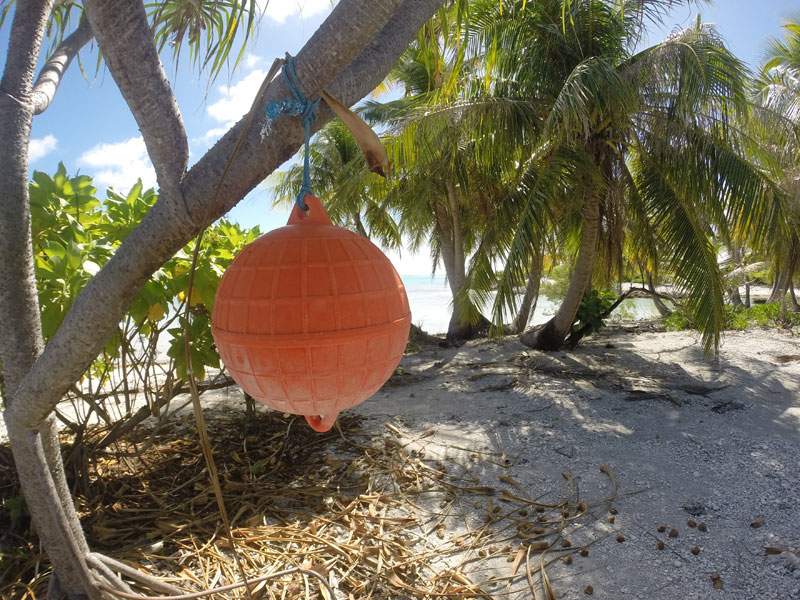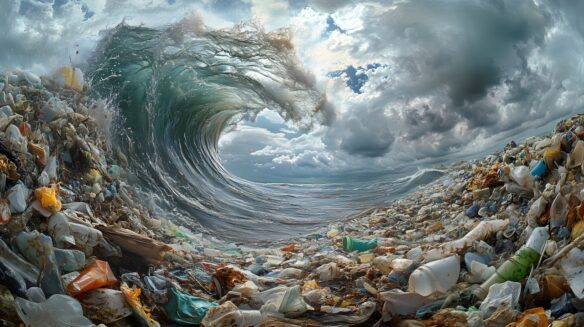
Photograph: © SAF — Coastal Care
Excerpts;
Although the fates of microplastics (0.1–5 mm in size) and nanoplastics (<100 nm) in marine environments are being increasingly well studied, little is known about the behaviour of nanoplastics in terrestrial environments, especially agricultural soils.
The latest findings provide direct evidence that nanoplastics can accumulate in plants, depending on their surface charge. Plant accumulation of nanoplastics can have both direct ecological effects and implications for agricultural sustainability and food safety…
Read Full Article; PhysOrg (06-22-2020)
Americans Consume Tens of Thousands of Microplastic Particles Every Year; Yale E360 (06-05-2019)
Americans consume more than 70,000 microplastic particles every year from the food they eat, the water they drink, and the air they breathe, according to a new study published in the journal Environmental Science & Technology. Scientists warn that while the health impacts of ingesting these tiny particles are largely unknown, there is potential for the plastic to enter human tissues and cause an immune response, as well as release toxic chemicals into the body…
Sea salt around the world is contaminated by plastic, studies show; Guardian UK (09-08-2017)
New studies find microplastics in salt from the US, Europe and China, adding to evidence that plastic pollution is pervasive in the environment…
Video captures moment plastic enters food chain, BBC News (03-11-2017)
A scientist has filmed the moment plastic microfibre is ingested by plankton, illustrating how the material is affecting life beneath the waves. The footage shows one way that plastic waste could be entering the marine and global food chain…
Scientists predict the size of plastics animals can eat, PhysOrg (03-27-2020)
Newly identified fish nurseries are choked with plastic; Smithsonian Magazine (11-12-2019)
A new study reveals that it’s not just adult sea animals that are getting a gullet full of plastic. Larval fish are inundated with plastic fragments in their nursery habitats and they’re eating those pieces along with their natural food sources…
People may be breathing in microplastics, health expert warns; Guardian UK (05-10-2016)
People could be breathing in microparticles of plastic, according to a leading environmental health expert, with as yet unknown consequences on health…
Thirty-six Thousand Feet Under the Sea; The New Yorker (05-10-2020)
Scientists estimate that in thirty years the oceans will hold a greater mass of plastic than of fish. Almost every biological sample that dredged up from the hadal zone and tested in a lab has been contaminated with micro plastics…
Microplastics are everywhere, study finds; PhysOrg (05-13-2020)
Plastic pollution: When The Mermaids Cry: The Great Plastic Tide, Coastal Care
Plastic is versatile, lightweight, flexible, moisture resistant, strong, and relatively inexpensive. Those are the attractive qualities that lead us, around the world, to such a voracious appetite and over-consumption of plastic goods. However, durable and very slow to degrade, plastic materials that are used in the production of so many products all, ultimately, become waste with staying power. Our tremendous attraction to plastic, coupled with an undeniable behavioral propensity of increasingly over-consuming, discarding, littering and thus polluting, has become a combination of lethal nature…









